France
Paris
Welcome to

People have never played so much as nowadays. The fast-paced growth of the gaming industry triggered by the need to stay at home during the pandemic is making games win an increasingly diverse and wider audience. The figures are dizzying: in 2019, the market had a turnover of 1.5 billion US dollars in Brazil and 152 billion worldwide, leveraging more investments than cinema and sports. In 2020, electronic games were the most discussed topic on Twitter, with 2 billion tweets. What does this universe represent for brands and how can they play the game?
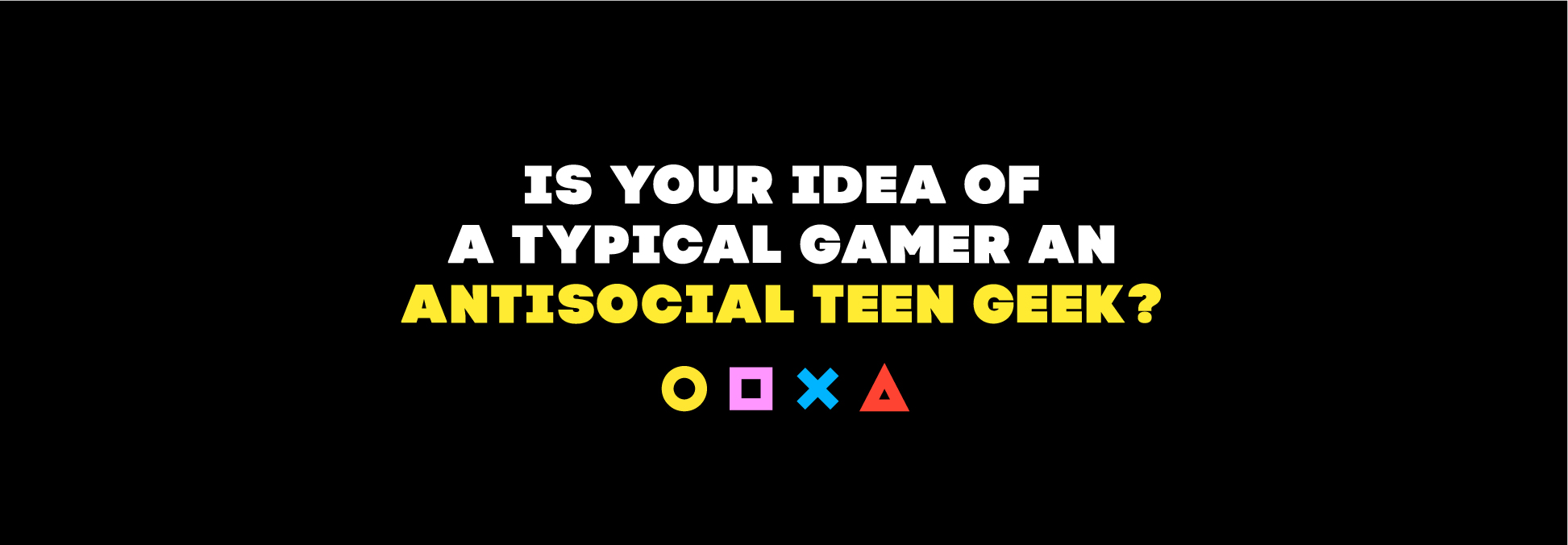
There is no doubt that games represent today for young people what music used to represent in the 90s: cultural identity and the feeling of belonging to a community. Games are intrinsically linked to young culture, today more than ever. But if your idea of a typical gamer is an antisocial teen geek, think twice. From Candy Crush to Fortnite, the profiles and ways to play are numerous, with games that fit everyone’s time and pocket, matching different lifestyles, personalities and interests.
According to the Pesquisa Game Brasil 2021 survey, 72% of Brazilians say they play electronic games, and most of them have played more online games since the beginning of the pandemic. The casual gamer is best represented by a woman between 25 and 35 years old, while the hardcore is usually a man between 16 and 24 years old. The survey also pointed out that almost half of the players are from the middle, lower and poor social classes. For all of them, the mobile phone is the choice of preference. This explains the success of games like Free Fire, available on mobile and with more than 100 million downloads. On the other hand, consoles are declining, much due to the exorbitant prices charged in Brazil. For Claudio Lima, CEO at Druid Creative Gaming, “the mobile has turned the key to the gaming market in Brazil. Playing was for upper-class individuals, it demanded a console or PC, and that was very expensive. Now, anyone can play. Kids today dream of becoming Free Fire players instead of becoming soccer players.”
In addition to playing, millions also watch other players, professional and non-professional, through streaming platforms that are growing non-stop – Twitch, for example, has more than 15 million daily active users. A global survey in 2020 pointed out that gamers between the ages of 18-25 spend an average of 4 hours a week watching other people online. This phenomenon is creating new types of influencers who play matches with their audience, sometimes hundreds in the same day, creating authentic bonds and a true closeness. The Brazilian gamer Cellbit, for example, has been recording videos for Twitch and YouTube since 2012, counting with more than 6 million followers, with a total of 300 million views.
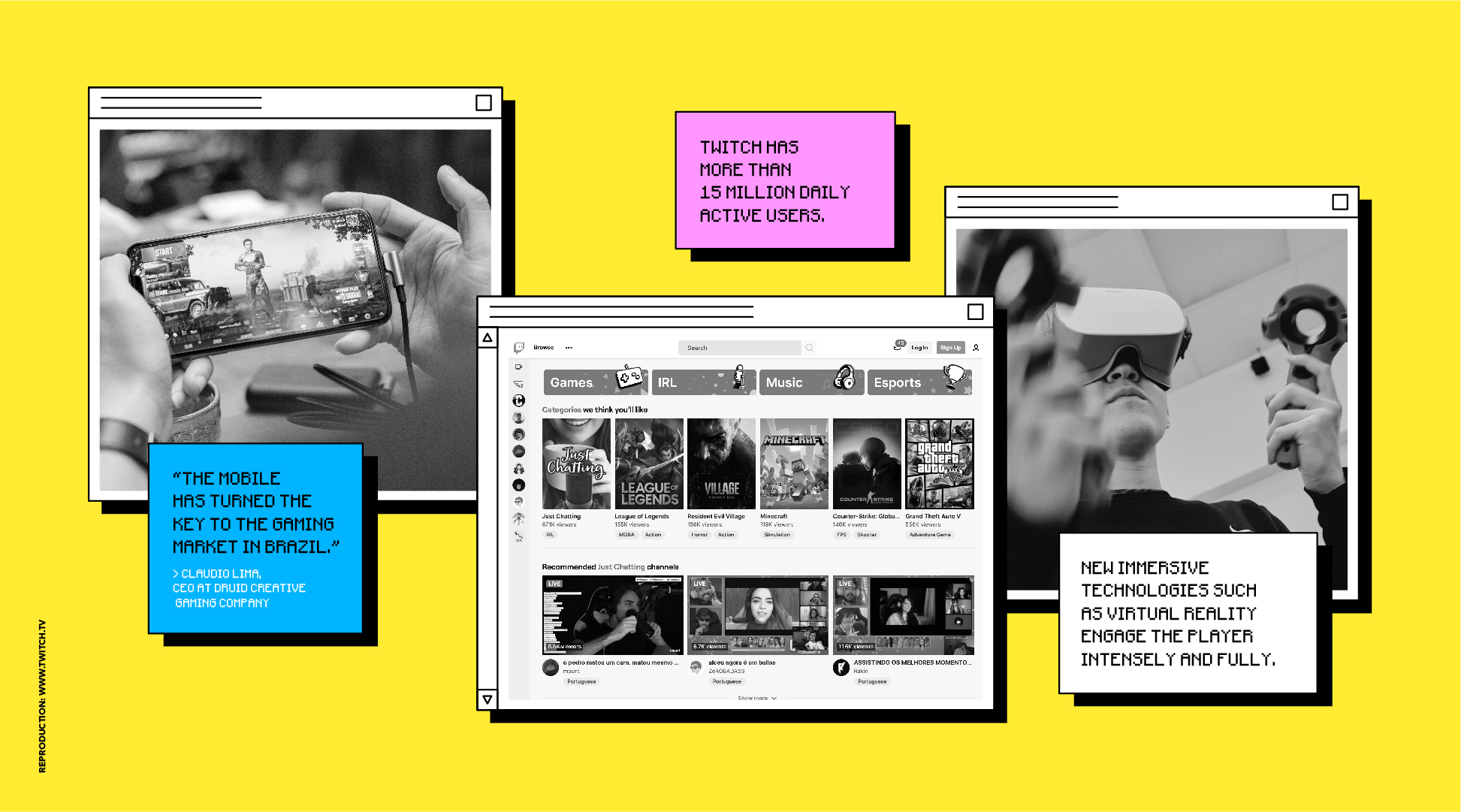
The gaming industry is shaping the future of entertainment, with varied and complex productions, immersive technologies and universes full of possibilities, besides impacting the streaming industry.
Immersive Games like Beyond Two Souls or Cyberpunk benefit from high-budget investments worthy of the biggest Hollywood productions, with the participation of the best writers, actors and artists. The result is the creation of incredible narratives, characters and soundtracks. New immersive technologies such as virtual reality engage the player intensely and fully, while augmented reality blurs the boundaries between real and virtual. And of course, in these universes, players have the possibility to do many other things: their avatars can watch music shows and spend their money in different ways, simulating the real world. Roblox, a very popular platform that allows users to create their own worlds and mini-games, aims to ”unite the world by building a metaverse (a virtual world that digitally replicates the real one), where millions can meet up in games, conferences, or in collaborative jobs within a virtual economy that has its own currency.”
Many non-endemic brands, that is, those that traditionally have no market links with the segment, are entering this world, creating new market dynamics and generating new demands – internally and from their partners. Unilever has created an esports center to better meet the needs of its brands; Publicis Play, launched this year in the UK, brings together a pool of experts from the group to provide creative, media and production support to its customers. In Brazil, Druid started operations at the beginning of the year and seeks to creatively connect games and brands, through a Business to Gamer model.
For traditional brands, entering the gaming world may seem scarier than it really is – but we believe there are far more opportunities than risks. However, entering this game is something that requires preparation, and before you even start creating content and activations, you need to build a solid strategy, consistent with the brand positioning and value proposition, to connect with audiences in an authentic way and not just as another product placer.
We’ve identified some ways in which brands can begin to relate to the gaming world, building bridges with communities to – lightly and unpretentiously – join the conversation:
On the other hand, we believe that some initiatives, at first glance tempting, can in fact be much riskier or less impactful:
As the pandemic subsides, the connections made by players within games will create opportunities outside of them as well. People who have met online will want to meet physically and show how they belong to the communities. Therefore, events will boom and meeting places, such as the famous Lan Gaming Centers, can revive.
Want to continue learning about games, gamer culture and their relationship with brands? We recommend the podcast marketin.gg, which investigates the relationship between games and brands and Netflix’s High Score, a docuseries which tells the story of video games in a fun way. Are you missing the first classic games? Check here how to get access to a number of retro games, for free. Stay tuned and read our article on gamification, or on how brands can apply the mechanics used in games.
Get in touch if you want to chat about the challenges and opportunities for your brand. And if this topic inspires you, and you are or know business professionals, strategists and designers who are interested in joining our team, write to [email protected] telling us about your expectations, goals and history. We are always in search of talent!
This article had the contribution of: Carmen Beer, Ana Cerqueira, Giuliana Sanchez, Thaísa Miyahara, Ana Paula Moreno, Josy Lamenza, Daniela Irrazabal, Rosario Maglione, Renato Storni, Luís Bartolomei, and the special participation of Claudio Lima.

Brand activism is nothing new. The importance of having a clear purpose has been extensely discussed for decades. Aligned with this foremost intention comes the necessity to define which causes a brand wants to support, meeting the demands of an audience that craves for more humane and coherent stances. Nowadays, brands have to stand for more than just profit: they are expected to contribute to building a better society.
The uncontrolled pandemic, the polarization of society, the stronger presence of social media and the growing cancel culture have boosted the game. What used to be an opportunity, is now a requirement – at times, essential for the survival. Brands have to build a positive impact territory; the mere position of trading goods and services, coupled with the neutrality towards relevant issues such as racism, gender, feminism and environment, is no longer a strong enough offer. Not taking a stand may give rise to the impression of consent, while stating an opinion can be seen as hypocrisy – if the talk is not followed by concrete actions, aligned with the brand’s DNA – depleting the brand’s value.
Thus, brands must take a clear stance and genuinely commit to one or more causes to remain competitive. The challenge faced is how to approach it constructively, being faithful to the brand’s values and not sounding self-serving, besides being careful to minimize the risks of boycott in an increasingly demanding environment where one slip can be fatal.
Bearing this challenging and intriguing setting in mind, we propose some reflections to help brands understand the different possible types and levels of activism, the risks and benefits of speaking up. Paths that, when followed with truth and transparency, can lead to a real and long-lasting commitment.
We all know, there is no single way to engage, and there is no right or wrong. We suggest below an ‘activism profile classification’ based on the brand’s DNA and its intended relation with its stakeholders, more than on the company’s size or category. Here they are:
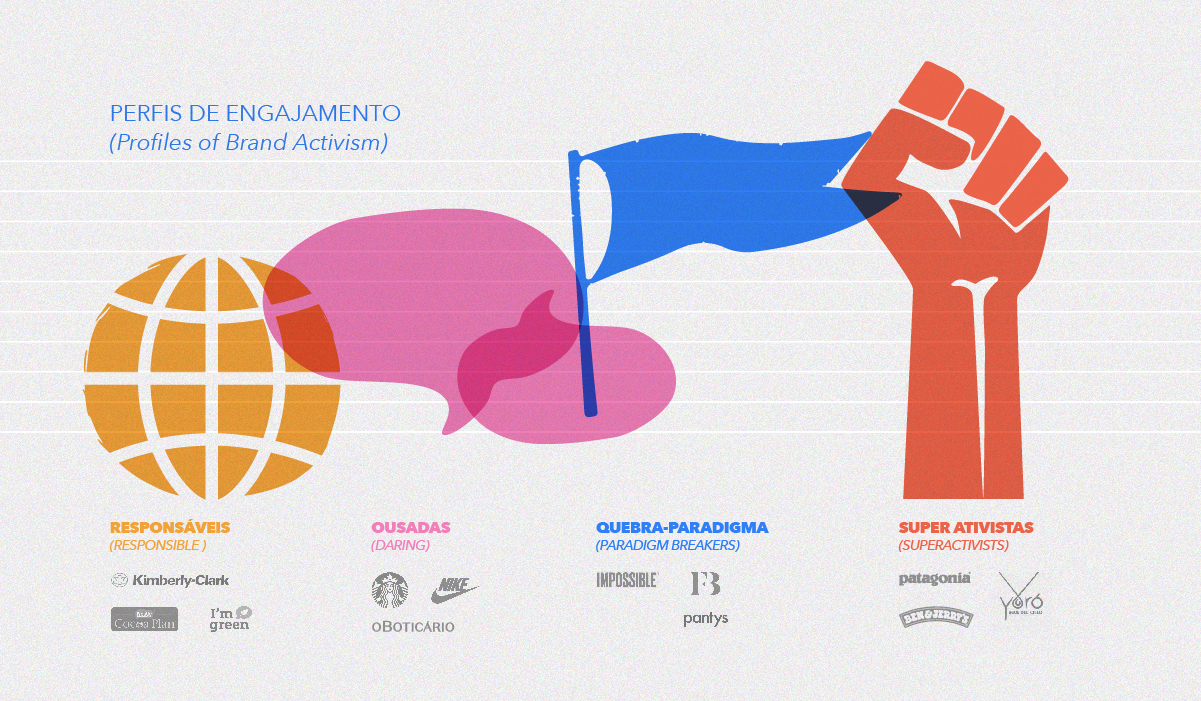
Superactivists
Brands that are activists since foundation, deeply engaged with causes related to the brand’s core values, and supported by the founding partners or CEOs themselves. They believe that action speaks louder than words, and they take to the streets with its public to be heard and actually aim to achieve social change. They create a strong emotional tie with its fans, so much that they usually become brand ambassadors.
Paradigm-breakers
Innovative brands, pioneers in their respective businesses since foundation. Their own core products or services are their flags, since their proposal is to change patterns and break a category status quo. They usually forge an emotional bond with their consumer base, for meeting previously unmet needs.
So, when is it worth to engage and get political about a current cause or issue? For Carolina Barruffini, CBA B+G Branding director, brands have to be more daring: “No doubt there are some risks involved when brands engage in relevant causes. However, many real examples have showed us that taking action is better than not taking a stand, even if there’s little impact – provided that the action is driven by truth and transparency.”
We listed below the pros and cons that every brand must consider before taking a stand.
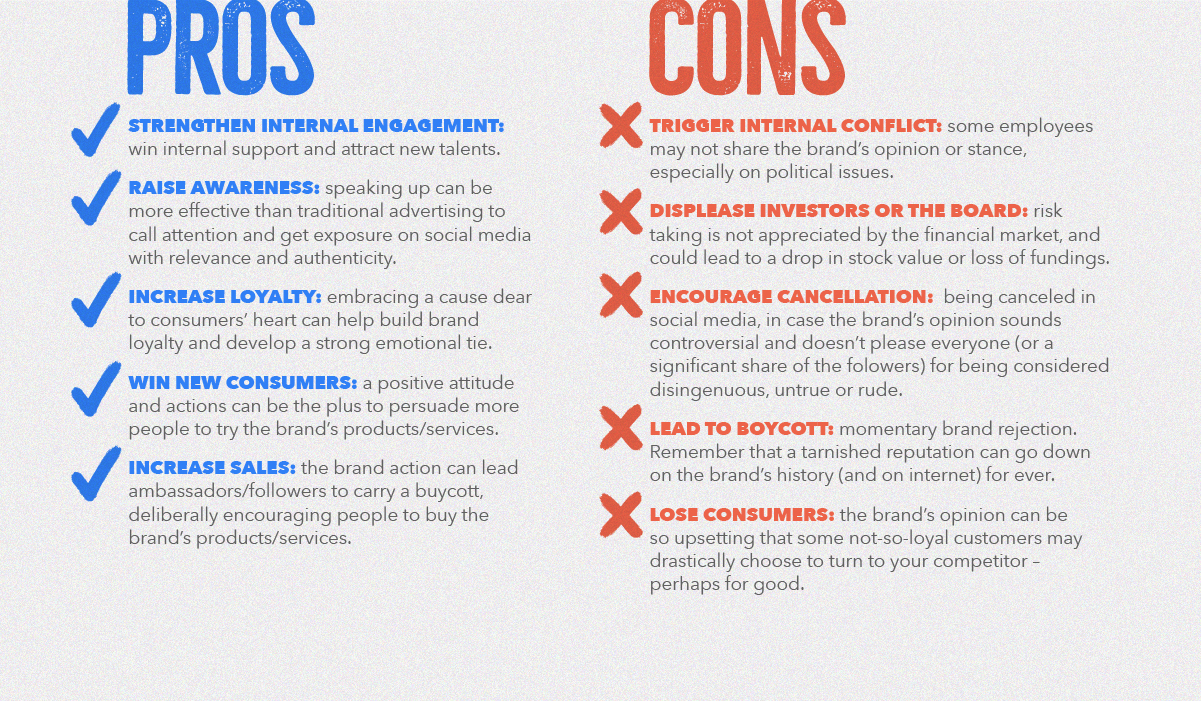
How then, can brand activism be a long-term, authentic and minimal-risk commitment? We suggest 8 steps to make it happen. It is a long journey, however it can surely put you on the right track to remain relevant in the future.
The 8 steps for achieving Positive Impact are:
1. Define a clear and powerful brand positioning
What is the brand reason for being, its beliefs? What is the brand’s DNA, its personality, its target audience? Branding for the future – a playbook with thoughts on how to reconnect brands, consumer and market – the three fundamental business spheres (which are still more importante in times of pandemic) – is a way to help you understand the brand context and its actions. Learn more about it here.
2. Choose your battles
Based on the brand core values – and aligned with them –identify the causes that the brand has credibility to support.
3. Define the stakeholders
Besides the target audience and brand consumers, who else does the brand impact, directly or indirectly, externally or internally? Stakeholders include employees and their family, board and investors, influencers, specialized media, government and social agents.
4. Look at the brand’s track record (and its present moment)
Although the brand purpose may have evolved over the years, the brand’s past cannot be ignored. It’s important to revisit previous actions, statements and campaigns to assess the credibility of engaging on a topic. And, sometimes, make a mea culpa (Skol has done this in 2017, who remembers?). Also, reputation must be considered; if it is fragile, spotlighting your brand may not be the best move.
5. Define the brand activism profile
Among the different profiles – superactivist, paradigm breaker, daring, responsible – which makes more sense for your brand today and which it aspires for the future?
6. Identify potential risks
The more renowned the brand is, the more important it is to assess the risks and benefits of taking a stance – or of staying neutral.
7. Walk the talk
Promises, great speeches or fierce campaigns are not enough to guarantee a brand’s survival without significant and real actions to support them. Consumers expect the brand (company) to engage in a realistic and tangible way, and if it doesn’t, they will ask for it.
8. Listen to feedback
Stakeholders feedback deserve attention. The brand must learn from its mistakes and successes and act quickly. Monitoring the brand’s “promises versus deliveries” can be decisive for the brand’s health and reputation.
Would you like to delve deeper into the topics of activism, brands and branding? We recommend: watching the interview with Rose Marcaria – Patagonia President and CEO – for Stanford students; listening to the episode Ativismo nos dias atuais (Today’s activism), from the podcast “O Tempo Virou” by Giovanna Nader, with the social activist Alessandra Orofino; and last but not least, reading this excellent article on the importance of taking risks, written by brand strategist Jasmine Bina.
You can always get in touch with us if you wanna chat about the challenges and opportunities for your brand. And if this subject inspires you and you are or know business professionals, strategists and designers who are interested in being part of our team, send an e-mail to [email protected] with expectations, goals and stories. We are always looking for new talents!
The content of this article had the contribution of: Carmen Beer, Ana Cerqueira, Giuliana Sanchez, Thaísa Miyahara, Carolina Barrufini, Ana Biselli, Renato Storni, José F. Ramirez, Fabiana Quiroga, Josy Lamenza, Daniela Irrazabal, and Luis Bartolomei.
With the rise of feminist movements and the fights for gender parity in society, we questioned the place of women in companies in France. Although actions, such as the equality index, have been put in place, women represent today (2020) only 18% of management positions in our country *. Of course, gender diversity is more and more accepted, standardized, and demanded in different fields, but women are still too rare when it comes to leading. (Since Isabelle Kocher was disembarked at the beginning of February from her position of Managing Director at Engie, there is no longer a woman at the head of a CAC 40 ** company).
Design has long been a man’s business.
Women more often than men tend not to feel legitimate in certain positions of responsibility. The world of design is no exception. Indeed, design has long been a matter of man. In fact, the most famous designers have often been men; women having been completely excluded until the 1930s. A phenomenon that could be explained by the following fact. Women have long been seen as simple housewives, unable to understand the business world and run a business or a team. Another explanation could be that of “impostor syndrome”.
However, there are exceptions! Some women still manage to find their way in this world long dominated by men. Ray Eames, Charlotte Perriand or Florence Knoll. These names mean nothing to you? Understandable. These are women who, despite their talent and skills, have remained in the shadow of men. For example, Charles and Ray Eames have long been thought of as two brothers. Now, Ray is a woman. And what about the furniture designed by Charlotte Perriand that was signed Le Corbusier? But still, you surely know the Nike’s swooch ? One of the most recognizable symbols in the world. It was also created by a woman. And no, this is not the achievement of one of the brand’s co-founders! The artist’s name is Carolyn Davidson; yet, still too few people know her name. And finally, let’s talk about the Knoll furniture publishing house, inspired and founded by Florence Knoll, and not her husband. It is important to keep in mind that in the 1950s, when women were supposed to stay at home, a young woman like Knoll was able to build what is still the biggest furniture publisher today! If this has been possible, it is because all women can do it and, above all, be legitimate to do so.
The stories of these women remind us of how important it is to fight for your passions. These design pioneers, who at the time were not rightly regarded for their work, are now among the most recognized female designers.
So, to all future generations of designers, DARE!
But then, beyond the place of women in design and their positions of responsibility, do the latter influence creations? Can we, with the naked eye, recognize a feminine creation from a masculine creation?
Emotions have always been considered a gender marker. The men are in the reason, the logic, the pragmatism while the women have a more sensitive and in fact more intuitive approach; which will make them more inclusive and emotional in their approach. However, one is not better than the other. What makes design so interesting and powerful is the combination of the two influences: sensitivity and pragmatism, emotional and functional, compassion and logic. Creation is therefore an act that goes beyond genre. When you are a designer or a creator, there is necessarily a more important dimension of sensitivity, which goes beyond the genre. However, when the council looks at more technical, performance-oriented design registers, there may indeed be more men, such as architecture. We can then wonder if this is related to emotional creation versus mechanical creation?
So, the question could be: does the genre has an impact on the perception that the designer has of what surrounds them and what feeds their inspiration, on their approach ultimately? A designer is someone who observes the world around them and who responds to issues. The world around us does not look the same for a man as it does for a woman, so they tackle different issues.
A concrete example: at the end of the 1940s, Charlotte Perriand invented the open kitchen; why the kitchens should always be relayed to the back of the house, isolated? House in which the woman would only have the right to appear with the finished dish. With an open kitchen, she can cook, chat with friends and family, have a glass of wine, etc. A purely design issue that a man might not have thought of; and it is in this sense that the genre has an influence. This influence will allow women to be more attentive, especially to brands, which are more collaborative with consumers and their customers.
The future of women in design looks bright and promising.
The future of women in design therefore promises to be flourishing and very promising; even if it will always be a rocky road. This notion of resilience that women have, this courage and this selflessness make them forces capable of creating designs that are more respectful, more durable and more human. We have gone beyond the demands, and arrive in a logic of appeasement, and recognition of the strengths of women, without comparison. A balance, a complementarity.
Fighting today goes way beyond what it was even a few years ago, and is gender-neutral. At the moment, society is moving at high speed on the issue of gender. The new generation takes up subjects with greater heights, focusing their struggles on equity and diversity. In addition, there are more and more collective movements, led by women, which are flourishing, in all fields. These collectives will make it possible to break these glass ceilings. Women, just like men, will finally be able to show their talents and be recognized for it.
Thus, female influence is therefore present in the approach and analysis of a problem. But in the end, the expression is done in the same way since all designers are passionate about their profession and sensitive by nature.
In short, the design is therefore non-gendered.
And, because design is a mirror of society, and society is multi-gender, it must address all targets, and all walks of life.
* Source France TV info : https://www.francetvinfo.fr/replay-radio/c-est-mon-boulot/seulement-trois-femmes-sur-120-dirigeants-dans-les-plus-grandes-entreprises-francaises_3838909.html
**Source Europe 1(https://www.europe1.fr/societe/les-femmes-grandes-absentes-a-la-tete-des-entreprises-du-cac-40-3950352)
A resilient territory can be defined as having the capacity to anticipate, react and adapt in order to develop sustainably regardless of the disturbances it faces.
Additionally, as a branding agency, we believe in design as an element of positive transformation. Since 2017, we have been convinced that the successful brands of tomorrow are those that will place people at the heart of their approach, embody a cause and have meaning, to leave a memorable mark beyond what they sell. Indeed, beyond local elected officials and mission-oriented companies, brands can also become actors.
They will always keep their primary economic role: to create jobs and to have an impact on the purchasing power of consumers. But they have the ability to go beyond their primary purpose and thus have a key role to play. A support role but also a driving force. Why? Because they are anchored in a principle of reality that brings them closer and connects them to citizens. This allows them to act as a support but also as a motor, a mirror of society. In addition to their commercial value, they participate in progress through innovation, their discourse, pedagogy, and give consumers the means to act.
Is it out of opportunism? Altruism? Obligation? And finally, what is left? Is purpose ultimately the basis of everything? This is not yet another story on the subject but to ask the question of the role of brands in the resilience of territories.
Some brands have transformed at the pace of consumers. They are anchored in a principle of reality that brings them together and connects them. They bring them a notion of dreams and pleasure by making their daily lives easier and by being more attentive to their needs. Indeed, there are those that adapt to the desires of consumers, without neglecting emotional value and pleasure. Those that meet their engagement needs. And finally, those who try to combine it all.
It is these useful brands, with a sufficiently rooted and embodied purpose that have a role to play in the development of territories. As a brand, how not to get lost in the twists and turns of its existence? How to elevate its utility beyond a simple functional response? How to impact the territories by developing sustainable and accessible solutions? Questions to which a few brands have already answered thanks to the consistency of the evidence and actions attesting to their purpose.
It is these useful brands, with a sufficiently rooted and embodied purpose that have a role to play in the development of territories.
Blablacar, whose mission has been declared since its creation “The good for all”, has demonstrated its agility and its contribution to the resilience of regions, thanks to the creation of its Blablahelp application: a service that connects neighbors in order to support and to support people who are isolated. A surge of solidarity around a community already well established and in perpetual growth, allowing the brand to have a significant impact on the territories and legitimacy to take part in them.
The startup Né d’une seule Ferme has also contributed to progress. The brand’s mission is to enhance the profession of farmer, by providing them with fairer remuneration, while promoting farms through the creation of the first national multi-local brand. Unique yogurts with a taste specific to each region.
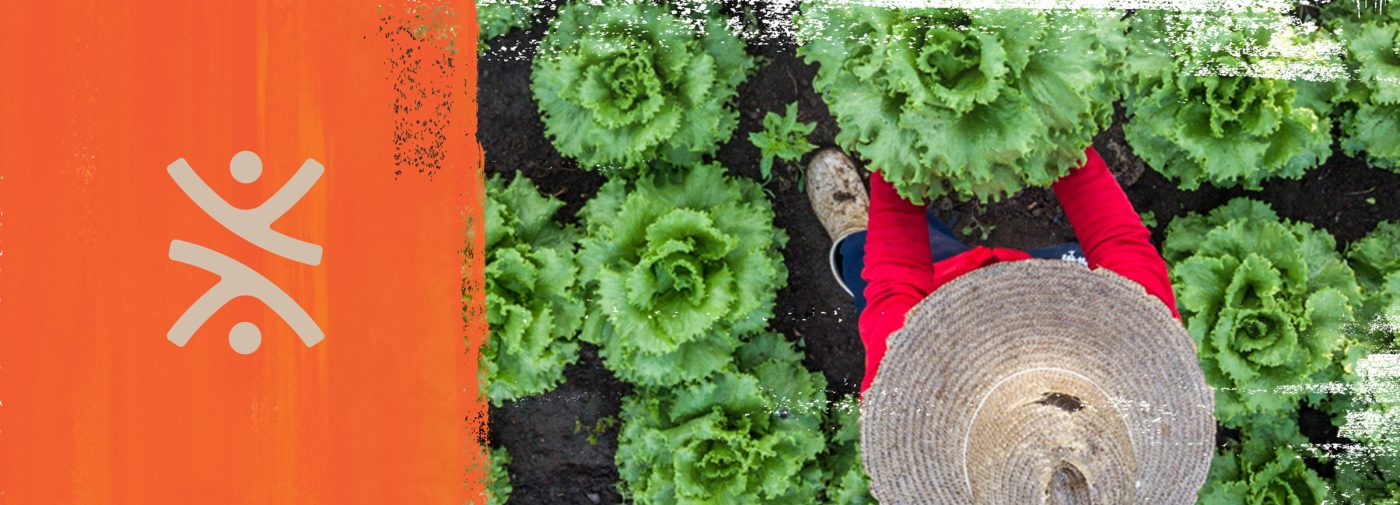
In short, alongside citizens, local actors and governments, brands also have a role to play in the resilience of territories and more generally in their environment.
This is not just an exercise in style or tendency: it involves rights and duties. Having an impact on society, and therefore gaining relevance to local issues, requires honesty demonstrated by thoughtful and consistent actions. Without this, the actions taken by the brand may be perceived as opportunistic, thus diluting its impact through lack of consistency.
These are levers of action in the resilience of territories.
your purpose ?
In May 2019, our IMG report Direct to Consumer revolutionappeared, dedicated to DTC brands, native digital players who, by disintermediating the value chain, are redefining the frontiers of certain specific industries.
From then on, many things have changed, and the DTC phenomenon, accelerated by the digitalisation attained during the pandemic, has affected the rules of the game in various sectors, even in Italy.
Just consider what has happened here with us over the last six months:

The reason why even established brands are making their moves – no longer timidly – in DTC can be explained in terms of three fundamental objectives

However, these three forms of leverage, absolutely crucial for consolidated structures, are no longer something innovative for consumers, who in the meantime have developed new expectations: the bar has been raised, to the point that the public does not just desire, but positively expects, an impeccable customer care, excellent design, faultless wow experiences, a website and social media packed with entertaining content, backed up by an exciting community.

Many, above all at an international level, have interpreted this moment in history as a wave to be surfed, a golden opportunity for standing out on the market. But the result is exactly the opposite. In other words, there is a standardisation in terms of what is offered, created by the desire to follow “DTC laws” to the letter: considering a product category, such as electric toothbrushes, we see that the market is becoming saturated with identical products, with the same business model, the same design, the same communication strategy and tone of voice. We are witnessing a progressive uniformity of supply, and consumers find it difficult to find their way around, because all brands are responding to the same need in exactly the same way.
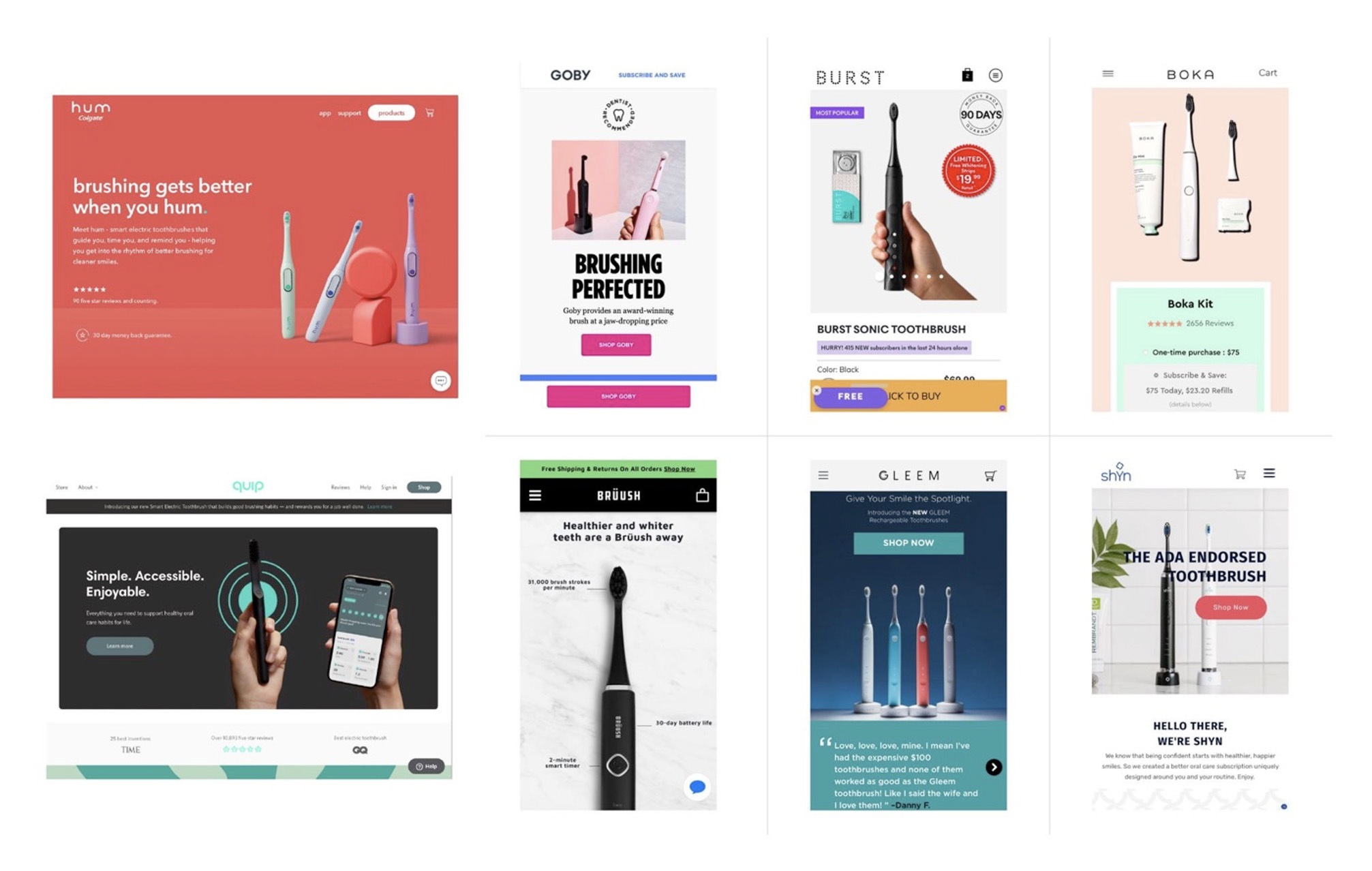
We are also seeing an increase in CPA(cost per acquisition), precisely because the powerful model based on social media communications, adopted early on by DTC brands, has become the principal sales channel for most DTCs, pushing costs sky-high.
There is yet more: DTC brands, in their DNA, have a specific response to the needs of a niche target. This “obsession” with a specific niche, something that for some time has denoted these brands’ power and success, is now beginning to crumble: by now, the niche has beenreached, if not by the brand itself, by one of its competitors, and growth, in terms of volume, has become very hard to attain, unless by applying new strategies for expanding the portfolio and/or services.
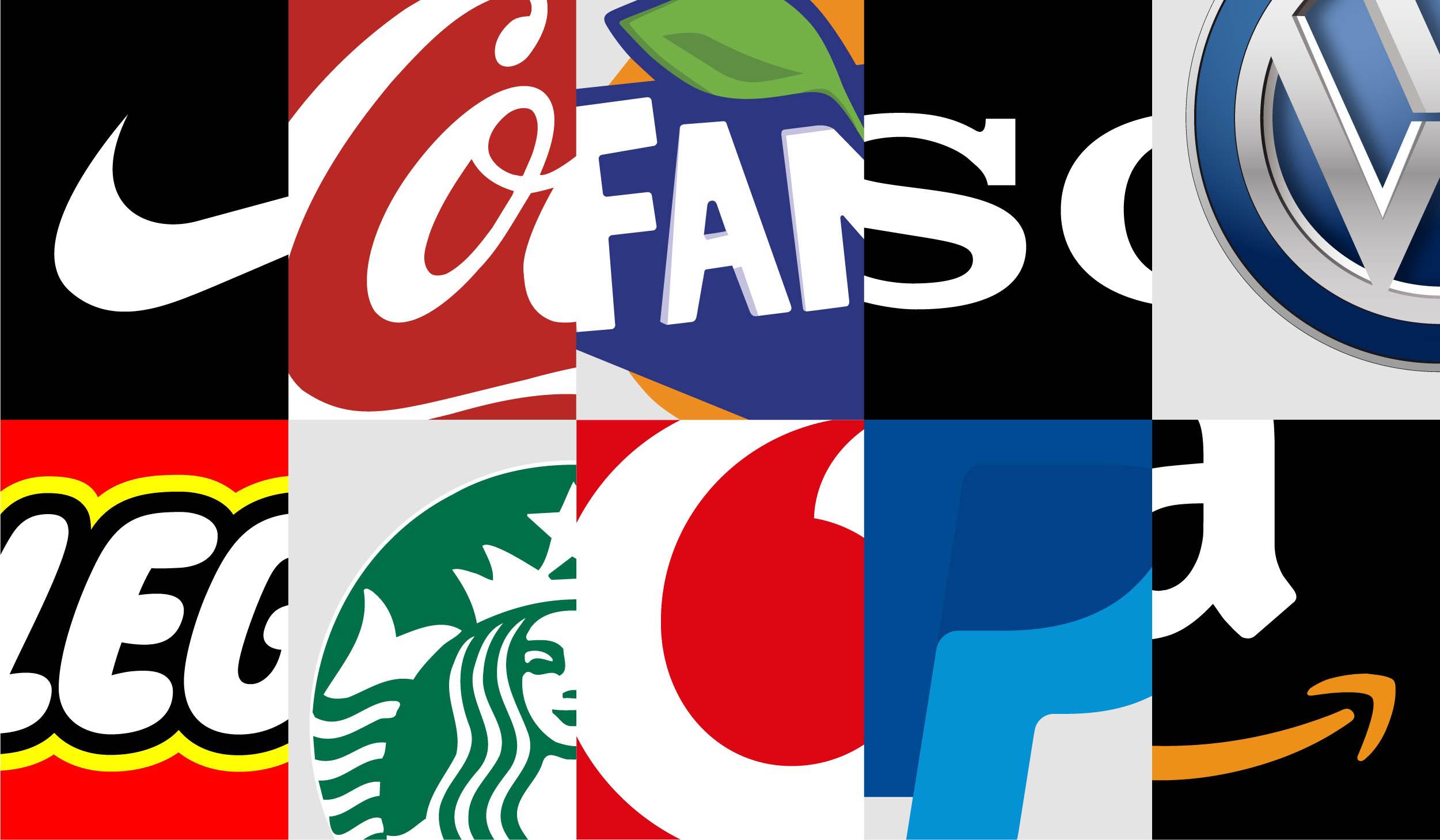
What is the added value that big brands can bring to this by now saturated market?
The entry of big brands into this market could make waves and bring some interesting innovations at a moment of notable difficulty for the smaller players:

BUT… There is still a big BUT.
Both DTC brands and big brands will soon find themselves fighting a shared enemy…
Having eliminated the old intermediaries is no longer enough. New middlemen are appearing and they will steal the privileged position of direct contact with consumers. Just think of the inexorable growth of voice shopping.

In an ever-nearer future, voice assistants will choose for us, according to our purchasing habits, but also strongly promoting proprietary brands, or those willing to pay in order to be selected automatically. This will lead to the arrival of incidental loyalty, in other words, the birth of a fidelity linked to decisions over which the user has no control.
So, the fight for disintermediation continues…
The concept of business by women, for women lately applied in the world of brands has been calling our attention. Of course we are intrinsically interested in approaching the topic from a branding, design, research and innovation point of view, but in this case, what makes our eyes sparkle is more the women share than the business one.
If on one hand we are living a chaotic situation, when feelings of radicalism and neglect seem to reign – and we are not speaking (only) of politics, on the other hand we have to value the openness we are experiencing regarding gender issues, representativeness and empowerment of different groups in society. It has been, is and will always be the time to open dialogue on inequalities and let them take center stage in the debate.
Getting back to women, according to a research carried out by Kantar (WPP) in 2019, the brands are still not really listening to what women want. The survey, called What women want, analyzed Brazilian women’s self-esteem and classified it into five dimensions. The analysis guides brands to take a position, aligning their purpose so that they connect to the contributors of women self-esteem: freedom of thought/ expression, sexual/body autonomy, accessibility/visibility, social connections/network and financial autonomy. It’s a very interesting study. If you have already read it, take the opportunity to reread it – you can download the full file here.
Knowing that there’s much more to be done, but looking again at the bright side of this discussion, we looked for brands that are known for engaging with the female universe. We chose two lists that present brands created and managed by women who think, question, provoke and inspire. The first was drawn up by Obvious Agency, an inspiration in itself due to the revolutionary format of the content built about women – they have it all: women’s rights, maternity, self-care, sex, career, self-esteem, relationship, culture, trends. In September, Obvious shared a list with six small businesses created by Brazilian women and how their brands take a positive and affirmative stance. It is worth a look! The second is a list from an American magazine from California – Redbook, which highlights successful foreign companies run by women, which aim to wield a positive influence on other women. Learn the stories of these 13 business women and their brands.
Cristina Fernandes, the entrepreneur from Atelier Lady Brown mentioned in the Obvious list, told us a little about the adventure of owning your own business. In addition to her will to create, she counted with her qualification in fashion, her mother’s techniques and, joining talent and discipline, added one more element – a learning that can be regarded as a good piece of advice for other creators: “I have learned that we must not be afraid of pricing our product. Trying to please is not the way to go, but rather understanding the value and costs involved. The right clients will come and value our work properly.”

There’s also a growing and powerful movement around menstruation.
Many companies have been changing their brand language and products to keep up with a topic that, a short while ago, was considered exclusively a women’s issue. Now, they see the need to represent the diversity of experiences, when addressing people with periods. Therefore, apart from women, they include transgender and non-binary people – who have always been neglected by brands – generating a buzz, and affording visibility and demystification in campaigns such as How You Period, #TheWholeBloodyTruth.
With the same demystification context of the menstrual taboo, another Brazilian example of awareness campaign is the #ChegadeEstigma, by Intimus – Kimberly-Clark®’s brand of feminine care. “The campaign challenges society to break paradigms and negative perceptions about menstruation, which usually picture women in a fragile and limited situation”, explains the category’s Marketing Director Samia Chehab. “It is more and more my role to give voice and make room for these causes and also meet consumers’ current expectations about an active brand positioning in society”. Another woman, Thais Hamer, CBA B+G’s responsible for Intimus brand, shares Samia’s view: “the freedom I experience at work today and the purpose of the brands I assist, such as Intimus, in synergy with my values, fulfill me and motivate me to keep building a fairer world, where there’s room for all, men and women.”
And there is more! A recent collaboration of Pantone® with a Swedish brand of menstrual cups has resulted in the red hue Period, in a campaign to promote menstrual positivity, encouraging people, regardless of gender, to feel comfortable and at ease to discuss and normalize the topic.
Transcending business, the role of women in this pandemic – that is outlasting people’s patience – should be highlighted. As you must have already read, an important fact that deserves attention is that the UN High Commissioner has appointed that, from the 12 countries that have better coped with the Covid-19 pandemic, nine are governed by women. The positive role that the feminine view and handling can play in the leading of possible solutions with respect to the pandemic scenario, becomes clear.
Speaking of view, what do we see when we look inside? How are we behaving, in our CBA B+G community, towards women? From which stance are we discussing this struggle for social change and evolution?
Women are nothing short than 70% of our total workforce, and they hold more than half of the managerial positions (54%). Considering this large representation, simple but impacting initiatives have been sought and implemented. In 2019, we introduced an internal policy aimed at mothers, aware of the fact that during the first year of maternity it is hard for them to balance the roles played in their family, social and business life. In addition to the maternity leave time secured by law, a short-time and gradually restored work schedule – in a home-office regime – was introduced, allowing mothers to resume the regular work activities 12 months after giving birth.
Working on the assumption that we are all exposed to structural contamination, gender issues are being closely observed, beyond the figures. As for example at the Board of Directors, where only one of the four positions are held by a woman. “Balance is the key-word”, says Shirley Rodrigues, HR manager. “The search for equity is one of the reasons for the internal study we are conducting to understand, historically, how our recruiting process and career development program have been driven, so that we are able to realize, in the course of time, if we are promoting gender equality, for example. And if not, what are the factors that cause this imbalance, in spite of our mostly feminine management environment – which has an active voice concerning promotions and bonuses. We want to understand which causes are structural – and therefore invisible to the arguments; which are cultural – and must be reviewed; and finally which are contextual and temporary… an on-going analysis and adjustment motion which, in spite of the two decades of operation, we are examining in-depth for the first time.”
The 1970s motto #thefutureisfemale has been fighting for decades the misogynistic culture. More than just a simple slogan, the statement carries meanings that are renewed over time. Some years ago we have conducted a study to understand the power of feminine and its impact on the understanding of the brands’ role and positioning. Our analysis has revealed that the feminization of businesses would come to stay – and indeed it has – showing that the feminine view and attitude would not only attract and retain women, but also more people, regardless of gender, by achieving balance and the universal transformation of purpose. It is a comprehensive and detailed study*, built and discussed in forums in and outside CBA B+G, that still inspires us and is worth remembering:
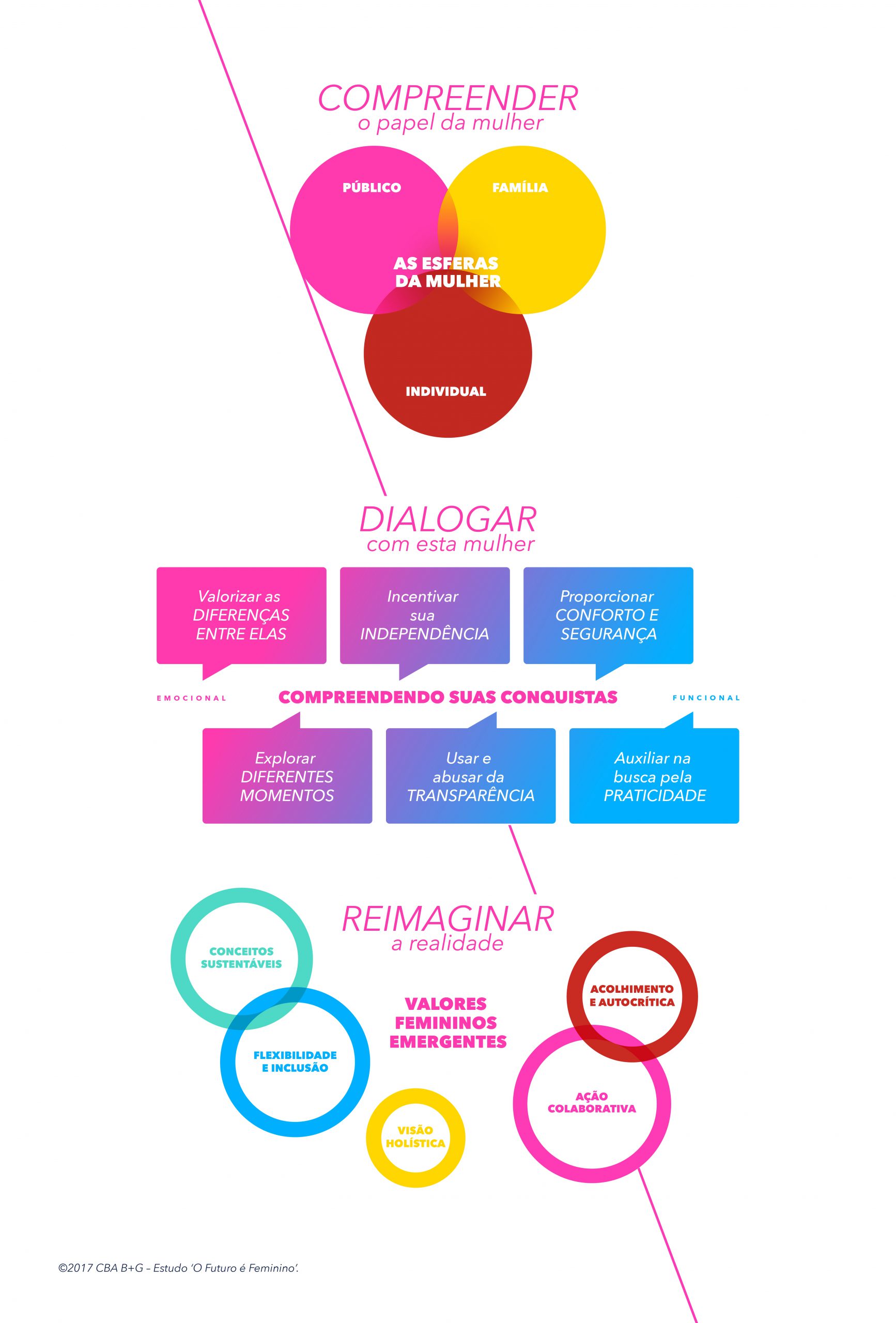
* To view this content in English, click here.
From brands to products, personal stories to social policies, across countries and continents, and in all spheres, women carry the power of change in a world that longs for balance through pro-women solutions. Finally, we would like to indulge with a time capsule, recalling now and forever, some of the icons of feminism. To print and fix on your fuchsia, cyan, black, period – or whatever color you please – wall!
The content of this article had the contribution of: Ana Cerqueira, Cristina Fernandes, Samia Chehab, Thais Hamer, Shirley Rodrigues, Thaísa Miyahara, Giuliana Sanchez, Ana Paula Moreno, Josy Lamenza, Daniela Irrazabal, Renato Storni and Luis Bartolomei.
The quest for meaning and usefulness brings a lot of changes; especially for brands that had chosen omnichannel. Signs that brick and mortar retailers are losing consumers along the way. The same is true for Digital Natives brands which only have a virtual relationship with their customers.
Why? Simply because Retail is a tool, not a purpose. It must be thought as an ecosystem and each brick has its importance when it comes to usefulness.

Today’s technologies are not the enemies of Retail. On the contrary, they make it possible to improve relationships, to facilitate advice, personalization and listening, and to manage inventories and the supply chain in real time, thus making it possible to better adapt to market expectations. The new digital tools also give every consumer a voice, creating more opportunities for brands to understand and respond to consumers and to create unique relationships on a large scale. On the other hand, brick and mortar stores are tangible proofs of a brand’s seriousness and credibility. Street stores appeal to the five senses (sight, hearing, touch, taste and smell), allowing consumers to immerse themselves in the brand’s universe, and thus to retain a stronger emotional memory of the brand.
This is why it’s important for the future of Retail to take both of these aspects into account in the quest for reinvention: digital access combined with physical experience in-store.
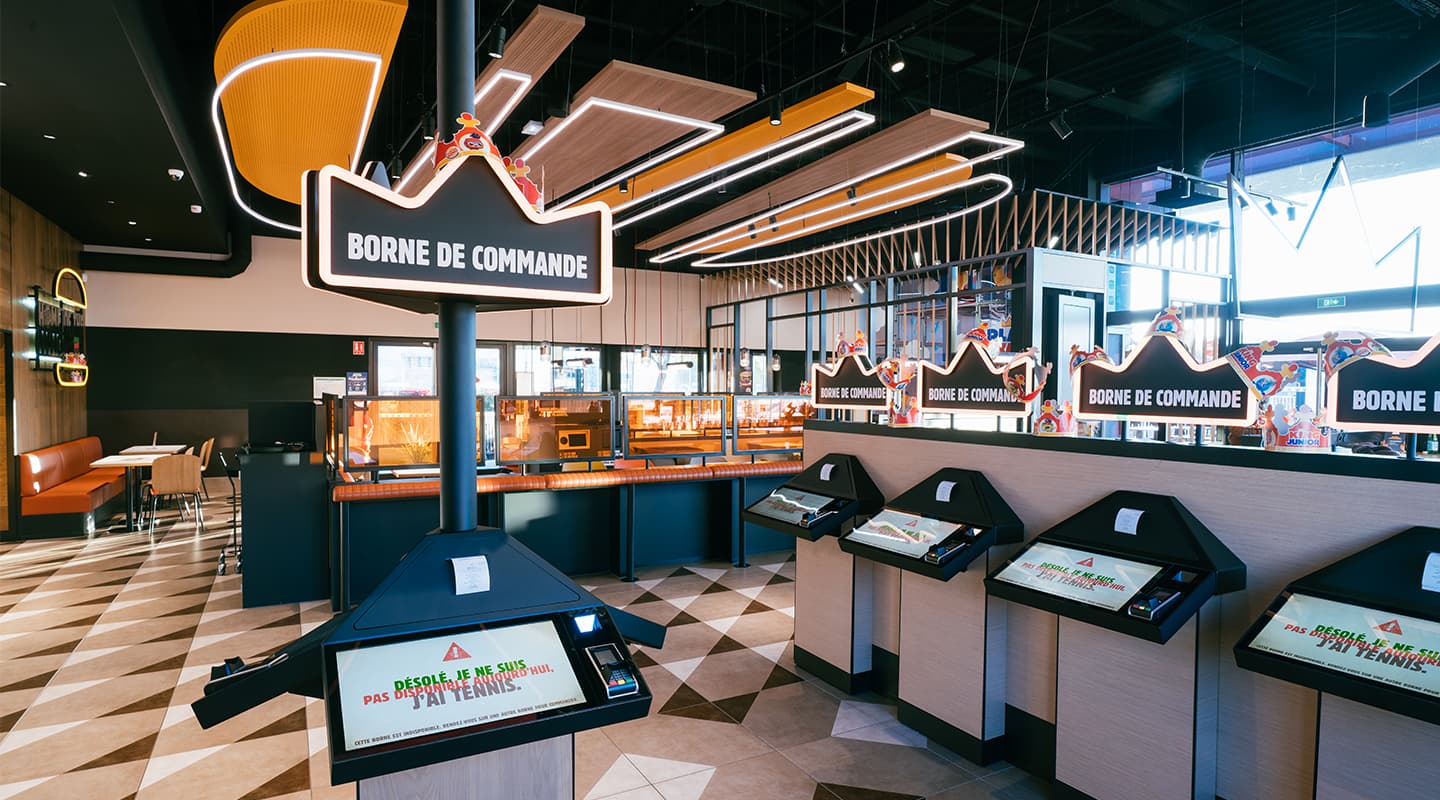
Moreover, the newest consumers (Gen Z) are curious, engaged, actors of their (virtual and real) lives, in search of adventure and highlights. They like to perform on stage, social life is like being in a play. These “consum’actors” like to be part of a tribe and to think collectively: they like carpooling, co-working, co-living, etc.
They carefully consider their relationship to a brand, which must be true, intimate, surprising, unique and diverse.
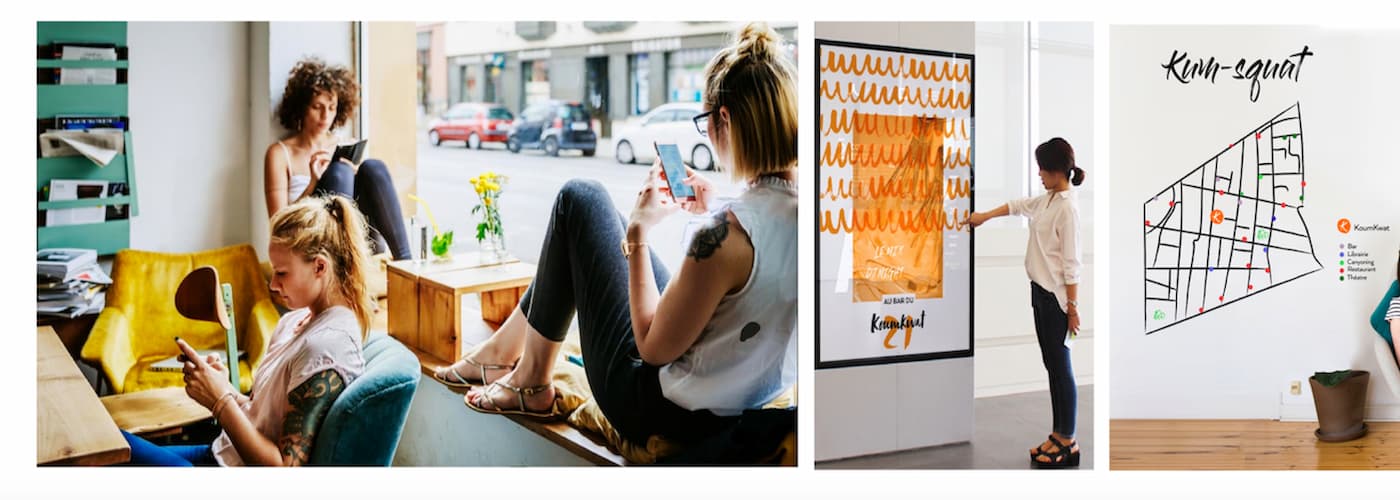
Therefore, if I had to invent a new brand today, as a designer, I would start by asking myself about the target audience and what their personality, tastes, habits, lifestyle and values are. Then, I would try to define a meaning and purpose that responds to a lack, or to a need for change. And I would finish by building an ecosystem for the relationship, making sure that each building block is at the right place at the right time. This could be done seamlessly by:
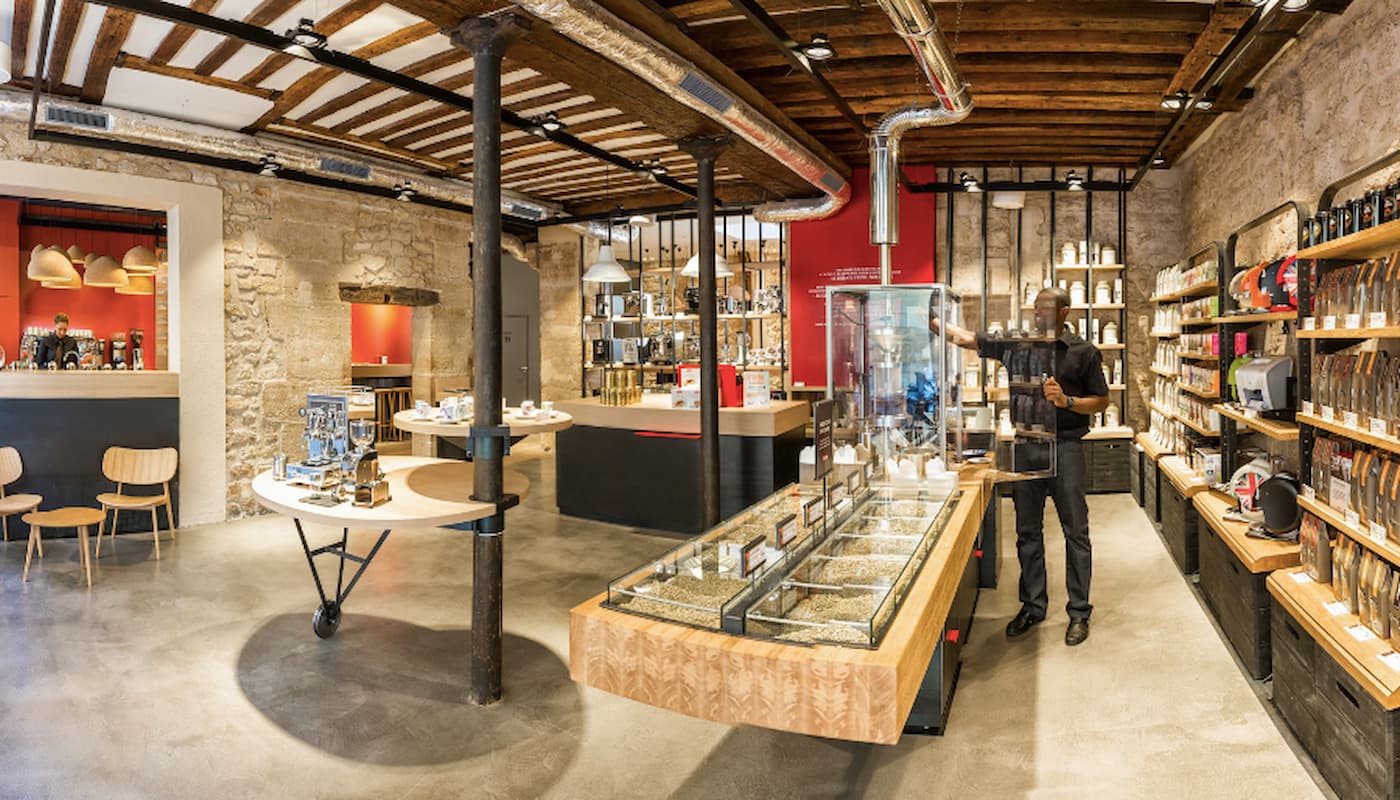
Tomorrow’s Retail is ultimately a tool to fully experience the brand with your head and your heart. Experiencing the brand before, during and after the act of buying, because customer loyalty is the best proof of success.
The Retail we once knew is dead; let’s invent the Retail of tomorrow by developing an ecosystem of physical and virtual experiences.

We know that the fact that more and more people are buying on-line is changing dramatically the buying experience. The products that were once seen on shelfs, are now purchased on a screen. The virtual environment reduces the natural interaction offered by physical stores. The on-line version of the product must take this change into account, however, should not alter completely its real characteristics.
Therefore, we believe that balance is key. The information of the product’s benefits must be kept, while the communication method must be adapted. In other words, we should keep the purpose and change the execution.
To find the right balance in this new purchase journey, we have developed a methodology to boost packaging assets, so that its advantages can still be offered, even on the on-line environment. The packaging must be impressive and appealing, to result in a purchase decision. The ‘e-pack’ mindset can be adopted for any category, observing the brand’s stage of development. Shapes, shades, contrast colors and messages – all elements are rethought to call attention and make the new e-shopper’s life easier.
The new e-pack methodology was developed by our Strategy and Design teams, guided by an innovative view, and matching the needs imposed by the new reality, respecting people’s needs while preserving the positive brand and product experience.
Something is useful if it serves a purpose or a person, or if it satisfies a need or creates the conditions for a need to be satisfied. An individual can be useful. So can an object. So can a service. All kinds of things can be useful, and all kinds of other things can be useless; something that is useful for one person may seem useless to someone else. So who is the judge of what is useful? And what criteria make it possible to judge?
To understand usefulness, it is interesting to observe how we define it over the course of a lifetime.
As children, usefulness opens up the field of possibilities. We constantly ask ourselves, “Why?” and “What’s that for?” These two questions shape our worldview, our understanding of what surrounds us, and the future we wish to create. The main criteria for assessing usefulness are logic, common sense and ideals.
As adults, usefulness becomes a means to an end. “How?” and “Why do that?” are the questions that guide us. We study for a career. We work to get paid. We make a life for ourselves in order to leave a legacy. The criteria for assessing how useful something is include how much time it will save, how well it performs, whether or not it can make money, and what kind of legacy it will leave.
The shift from childhood into adulthood turns our field of possibilities into a life path which is all mapped out.
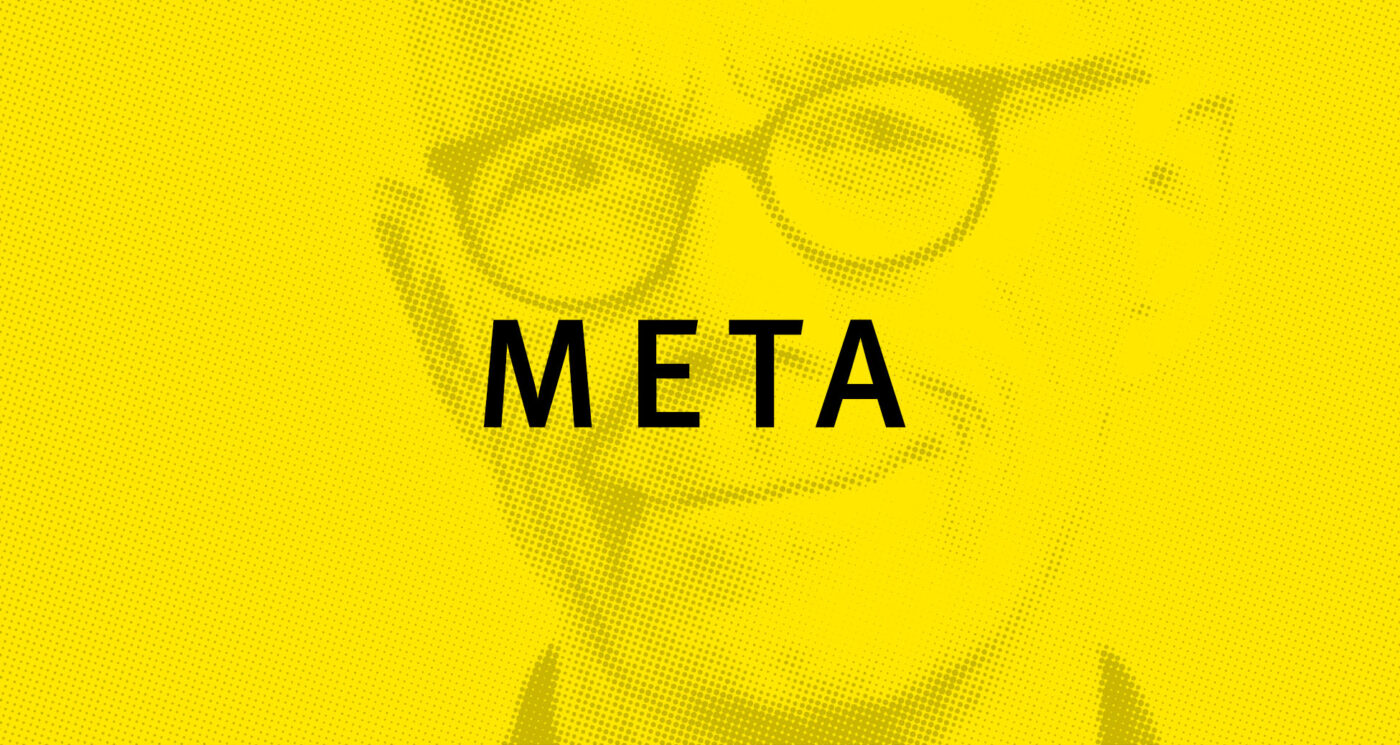
It is a chance to ask ourselves the questions that we stopped asking. It has made us realise that we can no longer carry on as before.
So the “downtime” opens the door to three opportunities. One is to create an ideal world with the aid of logic and common sense. Another is to establish new criteria for usefulness, criteria which define usefulness as whatever enables us to improve society, to contribute to the well-being of humanity or to preserve the planet. Finally, we have the opportunity to act collectively, since we have realised that we cannot succeed on our own.
Some brands have already led the way, proving to us that it is possible. Too Good To Go is putting an end to food waste. Yuka is encouraging manufacturers to offer healthier recipes. Farmers’ drive-through stores are helping consumers to eat locally. Engie is rewarding those who consume less energy. Daddy is getting rid of its plastic packaging. Patagonia is repairing damaged products.
Others want to follow this new road as well, making use of their resources and their visibility to serve the world of the future. But how can brands achieve this?



Design is an extension of usefulness. What links them is the task and intention they both share: to make everyday life easier and thereby facilitate change. Design is a tool for transformation, and it makes usefulness visible and tangible. In a way, it is the voice of a brand’s commitment, which means it can help to raise consumer awareness and thereby create change, a positive action that may lead to progress.
So for the brands, what we’re talking about is designing business models that make it easy to change our behaviour, by getting citizens involved in the effort. So we need to design positioning that motivates people to make a positive impact. We also have to design identities that have a beneficial influence. And we need to design products and services that embody this new approach.
That means designing useful things, with honesty, flexibility and commitment.
We are all facing the same situation. The current epidemic is forcing us to take a time out. More than three billion human beings are on lockdown, giving those not on the front line fighting the virus the opportunity to reflect on what they really need, and want. This represents a major spring-cleaning for end-users, consumers and local communities. What do we want to change in our lives and society?
Both individually and collectively, this current state of introspection is quite evident, but it is nothing new. We must not forget that in recent years, we have witnessed a growing current reflecting a deep need for change with the Yellow Vests crisis, general strikes, the #MeToo movement, eco-anxiety, and more.
The quest for meaning, purpose and being useful to society have all emerged in recent months. Enacted in April 2019, the French PACTE law is an example of humanity waking up to the need to get involved.
CBA has embraced this revolution for almost three years now. Through our Critical Imprint® initiative, we seek progress through design. This ideological, methodological approach has allowed us to establish a brand’s value with consumers and society, as well as to measure their concrete impact. We are also aware that major change does not happen by itself. Therefore, we have built a partner network tackling collective intelligence (Bluenove), brand value evaluation (Occurrence) and forecasting.
During this time of great reflection, how can we understand the deep changes that will result from the pandemic disaster?
Even though scientists had warned us about these risks, we must admit that our societies were not ready. Instead of plunging into a fatalistic attitude regarding a relatively unpredictable future, we must see the positive side of this situation: anything can happen. We are no longer confined by a gloomy narrative that defines a de facto future. We can take back our power by using our imaginations to envisage a new path.
At the end of this pandemic, it may be tempting to go back to the way things were before, but this is neither a viable, nor enviable, solution. However, building a new tomorrow by razing the current world to the ground is neither realistic nor relevant. It is up to us as citizens, nations, and companies to sift through, keeping what is good, improving what is useful and abandoning what was leading us off the edge of a cliff. Beyond everyday solutions, including mass remote working and medical phone consultations, changes in philosophy are also looming.
As a design agency, we must serve as a bridge between reality and companies: brands.
To understand the upcoming sweeping changes, it is necessary to know how to listen for and decipher weak signals. As a design agency, we must serve as a bridge between reality and businesses through brands. To do this, we need to go further than our Critical Imprint initiative. Discussing and listening to consumers through collective intelligence and analysing opinions are tremendous tools, and ones we will continue to use. However, in order to find, track and decipher weak signals, we must go out to meet so-called fringe end-users.
By definition, something on the fringe exceeds normal boundaries. A fringe user pushes things to their outermost limit. We increase the possibility of seizing real opportunities for innovation by taking a problem out of context and framing its development beyond its target users.
In 1872, Alexander Graham Bell believed he could use emerging electronics to help deaf people to hear, by creating a machine that sends sound via telegraph with a transmitter and a receiver. That’s how he invented the telephone. For the same reason, 100 years later, Vint Cerf programmed the first messaging protocols for the newly-born internet. Emails were the only way he could communicate with his deaf wife when he was at work. The vast majority of users of phone or email users are not deaf, but two major innovations emerged from addressing the unique communication problems of the deaf.

Fringe users refer to two opposite extremes of the spectrum for the use of a product or service. Their needs and desires are amplified. They find workarounds to existing problems or frustrations, unlike average consumers. They launch trends and thus become early adopters of a new consumer movement. For example, veganism was considered niche only a few years ago, but is becoming increasingly mainstream.
We can speculate as much as we like, but we are still in the midst of the storm at the moment, and everything is too unclear to know what will happen in the future. The only certainty is the belief that tomorrow’s consumers and end-users will have been pushed to the extremes in terms of their desires, requiring a profound change in the rules of the game. It is up to us to find those who have something to teach us, to listen to and observe them in order to understand how today’s world is evolving into tomorrow’s horizons. In this context, the lens of Critical Imprint® does not bring certainty in knowing what tomorrow will bring, but it can certainly contribute to an improvement in a brand’s value, resulting in increased engagement, commitment, simplicity and efficiency.